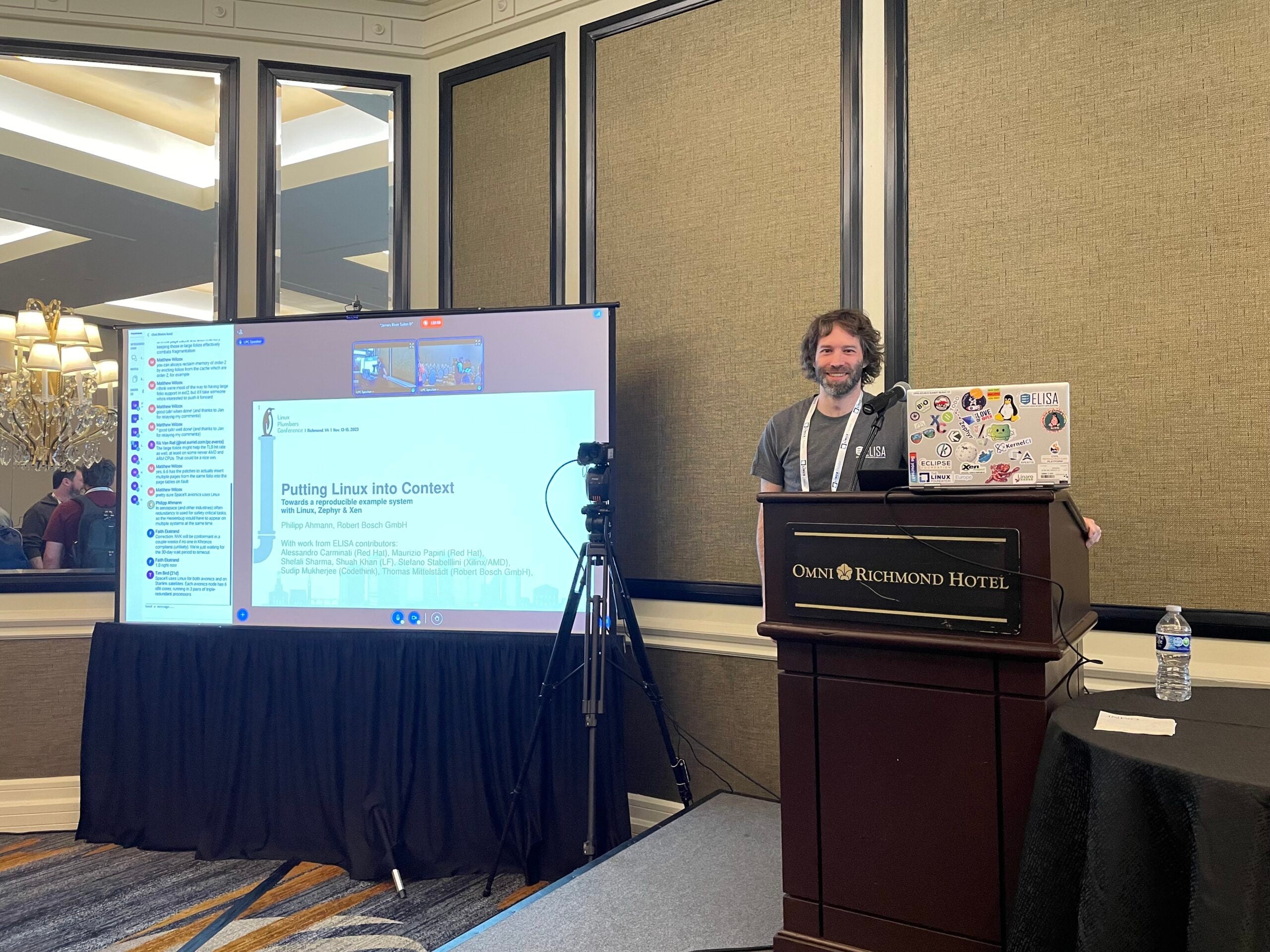
Last week, developers from around the world traveled to Richmond, Virginia for the annual Linux Plumbers Conference. Hosted at the Omni Richmond Hotel on November 13-15, the event was mostly in-person with a live-streaming element for those who couldn’t make it.
Philipp Ahmann, Product Manager for Embedded Open Source at Robert Bosch GmbH and Chair of the ELISA Project Technical Steering Committee (TSC), was at the event and gave presentation titled, “Putting Linux into Context – Towards a Reproducible Example System with Linux, Zephyr & Xen.” You can find his presentation video and PPT below:
Demos on embedded systems using Linux are plentiful, but when it comes to reproducing them, things get complicated. Additionally, on decent embedded systems Linux is only one part of the system and interacts with real-time operating systems and virtualization solutions. This makes reproduction even harder.
Within the Linux Foundation’s ELISA project, we started to create a reproducible example system consisting of Linux, Xen, and Zephyr on real hardware. This is the next step after we achieved a reproducible system with a pure Linux qemu image.
The idea is to have documentation, a continuous integration including testing, which can be picked up by developers to derive and add their own software pieces. In this way they should be able to concentrate on their use case rather than spending effort in creating such a system (unless they explicitly want this). We also show how to build everything from scratch. The assumption is that only in this way it is possible to get a system understanding to replace elements towards their specific use cases.
We had challenges finding good hardware, tools, freely available GPU drivers and more and we are still not at the end. A good system SBOM is also creating additional challenges, although leveraging the Yocto build system has provided some advantages here.
While we are setting up the first hardware with documentation from source to build to deployment and testing on embedded hardware, we aim to have at least two sets of all major system elements like Linux flavor, a choice of virtualization technique, real-time OS and hardware. Only when software elements and hardware can be exchanged, we identify clear interfaces and make a system reproducible and adoptable.
Open Questions are:
- What will be a good next hardware to extend this PoC scope?
- Where do open source, security, safety, and compliance come best together?
- Which alternative real-time operating systems and virtualization should be incorporated?
For more ELISA Project updates, subscribe to @ProjectElisa or our LinkedIn page or our Youtube Channel.